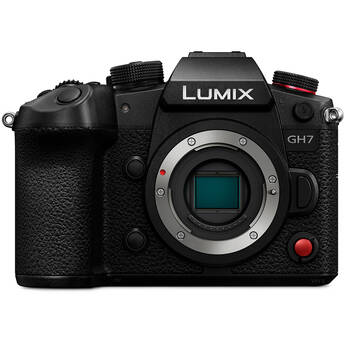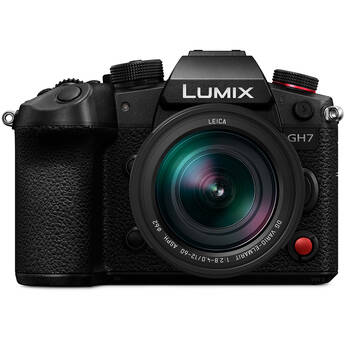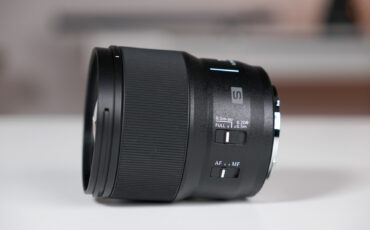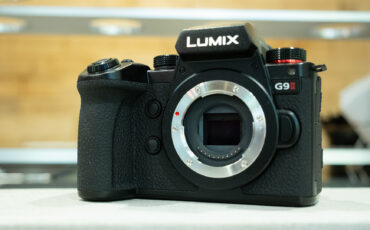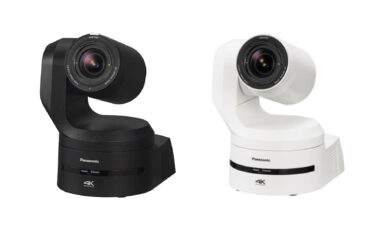Panasonic LUMIX GH7 Announced – PDAF, Internal ProRes RAW, 32-bit Float Audio, and More
The new Panasonic LUMIX GH7 camera features a new 25.2MP Micro Four Thirds sensor with phase detect autofocus (PDAF) and faster AFS and AFC in both photo and video. There is a wide variety of 10-bit video modes from 5.8K 4:3 open gate up to 30fps, 5.7K up to 60fps, 4K up to 120fps, or FHD up to 300fps all recorded internally to CFexpress card, SD card, or SSD via the USB-C port. The GH7 now also offers internal ProRes RAW recording in 5.7K or 4K (CFexpress or SSD) as well as raw HDMI output. Additionally, there is a 32-bit float audio recording available (with the new optional DMW-XLR2 unit). The camera features the same body as the GH6 with active cooling and will ship in July 2024 for $2,197.99.
The previous Micro Four Thirds (MFT) video flagship from Panasonic, the LUMIX GH6, was announced only two years ago, in February 2022. Since then, the Japanese camera manufacturer introduced PDAF (phase detect autofocus) to their camera lineup, which debuted in the full-frame L-mount S5 II and S5 IIX cameras. Last year, in September, the new MFT photography flagship LUMIX G9 II came out with the new autofocus system (Our G9 II review can be found here).
Today, right before the 2024 Cine Gear Expo in LA, Panasonic announces the new LUMIX GH7. Let’s take a look at the features and specs of the new MFT video flagship.
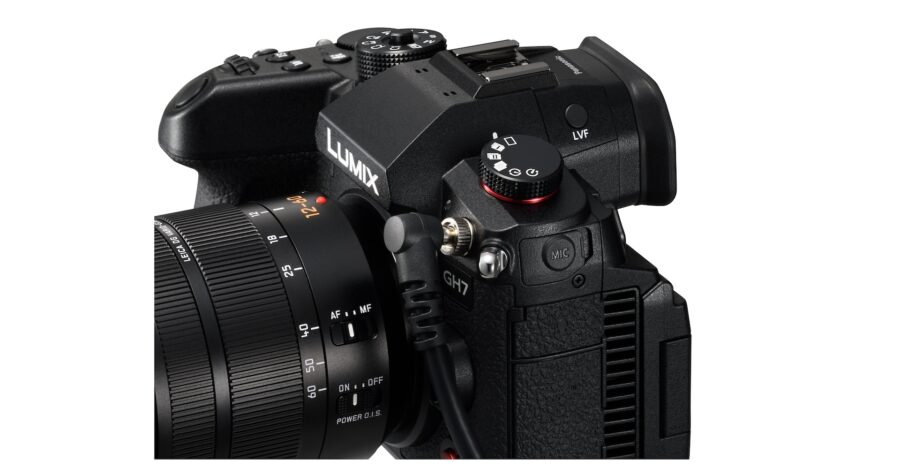
Panasonic LUMIX GH7 – 25MP with phase-detect AF
Firstly, there is a new 25.2MP BSI CMOS Micro Four Thirds image sensor with a 4:3 aspect ratio. Judging from its specs, it seems that it is the same sensor used in the LUMIX G9 II. It now also allows for phase detection AF, and the Dynamic Range Boost feature is available in the full ISO range. Panasonic claims the sensor achieves a dynamic range of 13+ stops (in 60fps or less) or 12+ stops (above 60fps).
For photographers, the GH7 offers faster AFC and AFS, resulting in a high framerate in burst shooting modes – 60fps and 75fps with an electronic shutter or 10 and 14fps with a mechanical shutter. There is also an AF-point scope that enlarges the subject temporarily to confirm focus, and 20x MF assist for better manual focus.
The improved PDAF brings better object tracking ability and better function in backlit conditions and in low light. On top of humans, animals, cars, and motorcycles, the camera can now recognize new objects such as airplanes and trains. Another innovation is the Target Part Detection – in the camera submenu, you can select which part of the object you want to focus on – front or side of the car, helmet, nose of the airplane or its side, etc.
The GH7, of course, features Panasonic’s 5-axis IBIS. The active IS setting focuses on correcting camera shakes when running, while the EIS corrects perspective distortion during video shooting. Panasonic claims the camera can compensate for up to 7.5-stop (in stills mode).
The GH7 additionally features the LEICA Monochrome photo style. Finally, another useful photography feature is the 100MP handheld high-res mode (resulting in 100MP raw and JPEG images).
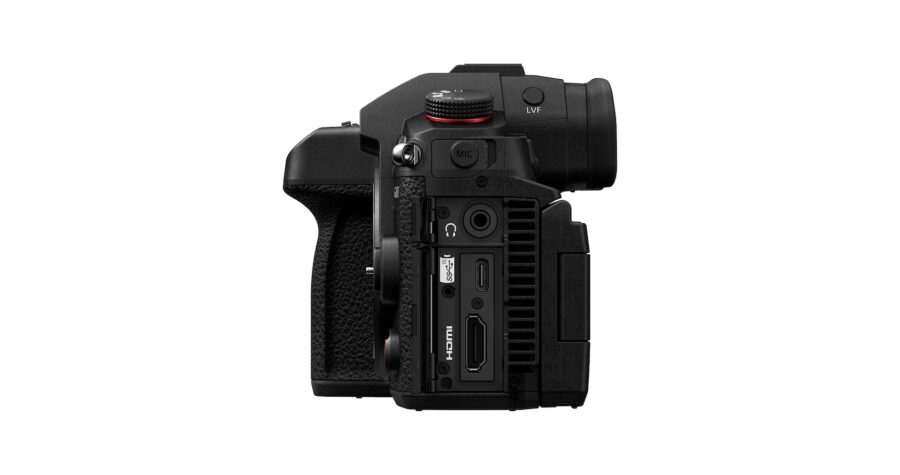
Video features – internal ProRes RAW recording
The LUMIX GH7 features a wide range of internal video recording modes, such as:
- 4:3 open gate 5.8K (5760×4320) up to 30fps
- 4:3 4.4K (4352×3264) up to 60fps
- 17:9 5.7K (5728×3024) up to 60p
- 17:9 C4K (4096×2160) up to 120p
- 16:9 UHD 4K (3840×2160) up to 120p
- 16:9 FullHD (1920×1080) up to 240p (with VFR up to 300fps)
All modes above 4K are in 10-bit 4:2:0, while the 4K and FHD modes also offer 10-bit 4:2:2 subsampling (except VFR modes).
Another new feature is the camera’s ability to record ProRes RAW internally. Both flavors – ProRes RAW and ProRes RAW HQ are available. The camera can save these files either to a CFexpress memory card or to a connected USB-C SSD. This is available in two recording modes:
- 17:9 5.7K (5728×3024) in 23.98, 24, 25, or 29.97fps
- 17:9 C4K (4096×2160) in 23.98, 24, 25, 29.97, 50, or 59.94fps
Panasonic claims the recording time is not limited thanks to the active cooling system, although the camera may shut down when recording in 5.7K ProRes RAW or 60fps when shooting in hot ambient temperatures.
The camera can record low-bitrate proxy files on the SD card (slot2). These offer three quality settings:
- H – MOV, H.265, FullHD 1080p, 10-bit 4:2:0, 12-16 Mbps
- M – MOV, H.265, FullHD 1080p, 10-bit 4:2:0, 6-9 Mbps
- L – MOV, H.264, HD 720p, 8-bit 4:2:0, 6-4 Mbps
Panasonic says it is possible to set Real Time LUT separately for the original video and proxy. HDMI raw output is still available as well.
Furthermore, the GH7 features native Camera-to-Cloud integration with Adobe Frame.io (for proxy video files, jpegs, or raw photos). The camera can upload the data via wi-fi or USB tethering. On top of C2C, the LUMIX GH7 can also stream video either wirelessly or through USB tethering, wired LAN, and so on.
It would not be LUMIX without the many assist functions that have been serving many filmmakers for years. With the GH7, we get a waveform monitor, vector scope, luminance spot meter (all variable and/or movable), markers, enlarged live display, and so on. The camera will show a red frame indicator when shooting video and a blue frame when live streaming.
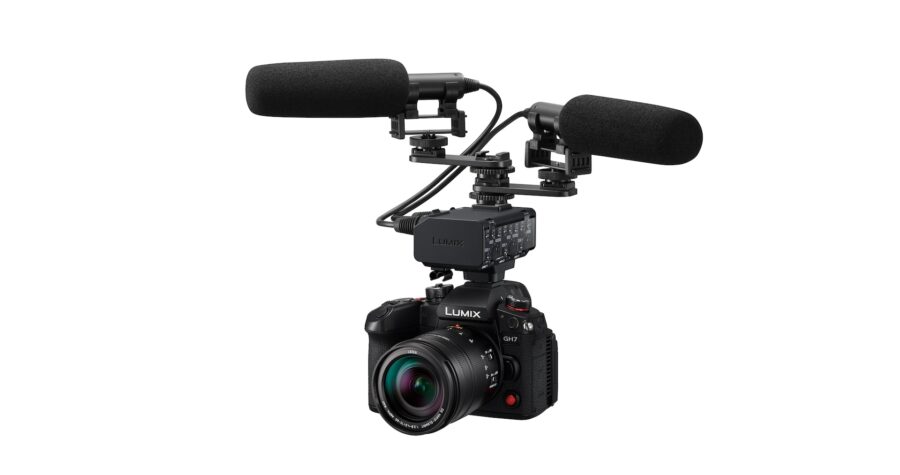
Audio – 32-bit Float recording
One of the unique features of the LUMIX GH7 is the inclusion of the 32-bit Float audio recording. This means the audio recording does not require setting gain, as it can be corrected afterward. This feature, however, requires the new optional XLR unit – the DMW-XLR2.
The new XLR unit adds other improvements as well – a microphone holder and a 3.5mm stereo jack input connector. This means the new XLR unit records four channels of audio. The GH7 also has a TC in/out terminal (combined with sync socket)
Enhanced real-time LUT & LUMIX Lab app
The new Panasonic feature that came out recently with the LUMIX S9, the Real Time LUT, also finds its way into the GH7. It allows the creation of unique filters by layering Photo Style and LUT with extended parameter settings for more creative control. The LUMIX GH7 also brings automatic identification of Photo Style, an improved LUT library, and a place for up to 39 LUTs to be saved in-camera.
The Real-Time LUT feature goes hand-in-hand with the new LUMIX Lab app. With this smartphone app (available on Android and iOS), you can transfer images from camera and then create a LUT, save it, and upload it to the camera to be used as a creative filter. You can also make your LUTs available for other creators.
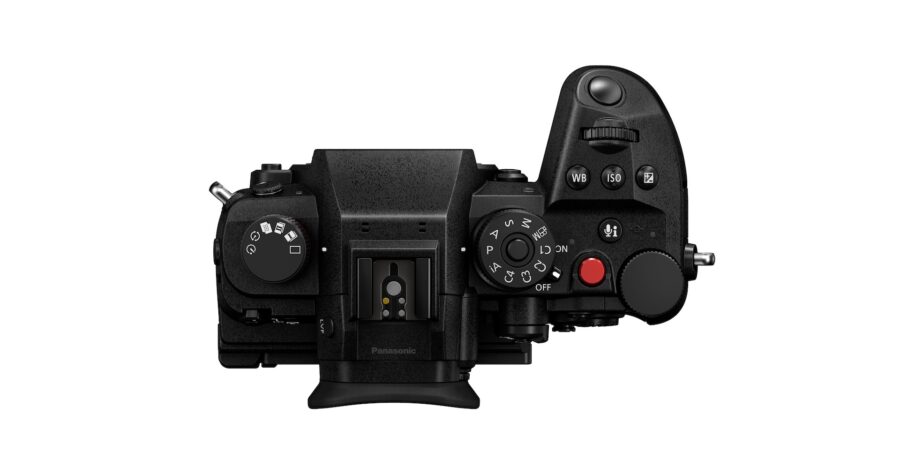
ARRI LogC3 from ARRI for the LUMIX GH7
Another little surprise is the ability to purchase a separate license key (DMW-SFU3A) for $199.99 and enable in-camera ARRI LogC3 recording. After recording in this ARRI Log picture profile, one can search the ARRI Look Library which contains 87 looks to choose from. It is also possible to store your favorite ARRI Look for rec709 LUT conversion and combine it with the in-camera REAL TIME LUT function.
Physical specs and features
The camera body is the same design as used for the GH6. It again has an active cooling fan underneath the display. Panasonic uses graphite to exhaust heat throughout the magnesium alloy body and through the heat dissipation fins that are being cooled down with the fan. Despite the active cooling, the body features a weather-resistant design, and it can withstand environments down to -10°C.
The rear 3” touchscreen monitor can again move freely even with connected cables. The OLED LVF has 3.68MP resolution and now has 0.8x magnification.
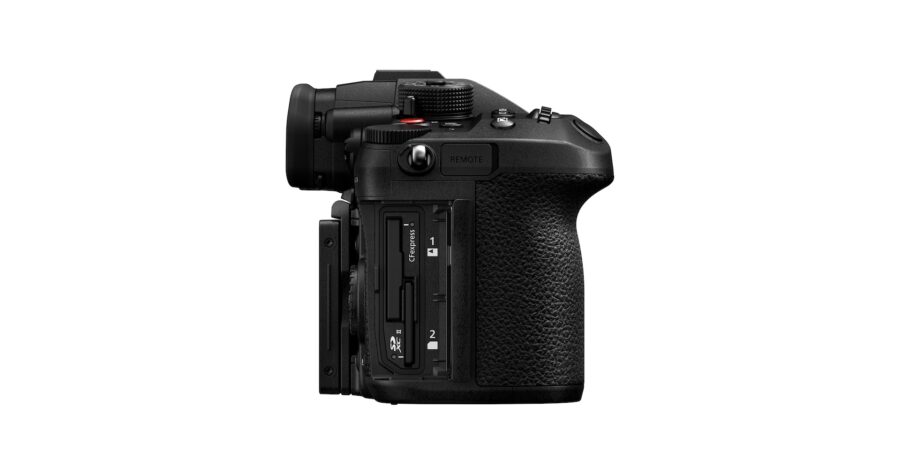
Media options for the LUMIX GH7
There are two memory slots – CFexpress Type B and SD UHS-II (U3, up to V90). Additionally, the GH7 can record video to an external SSD via its USB-C port. Most USB-C SSD media offer better price-per-GB, plus it helps with heat dissipation because a memory card is, after all, a heat source in a camera, too.
Panasonic says, however, that the external SSD cannot be used with the old DMW-BLF19 battery type as this does not provide enough power to the USB-C port. Also, the maximum output of the sensor is 60fps when recording to the SSD. Finally, Panasonic emphasizes it is very important to follow the correct procedure when connecting and removing the SSD to avoid corrupted data or other issues.
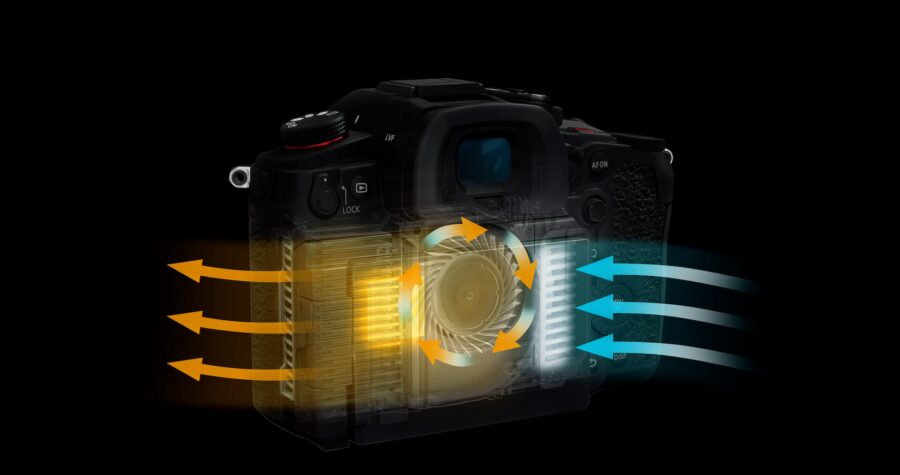
Price and availability
The Panasonic LUMIX GH7 will start shipping in July 2024 and its price has been set to $2,197.99 for the body only. As always, there will also be sets with selected lenses available.
Do you use LUMIX cameras for your work? Do you think Micro Four Thirds will have its place in video productions in 2024? What is your take on the new LUMIX GH7? Let us know in the comments section underneath the article.
